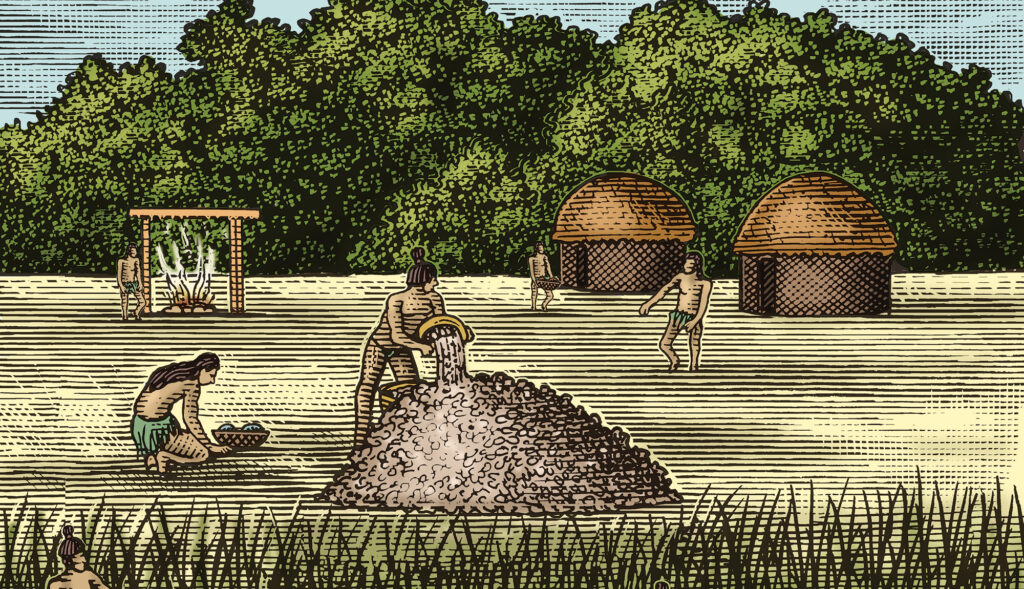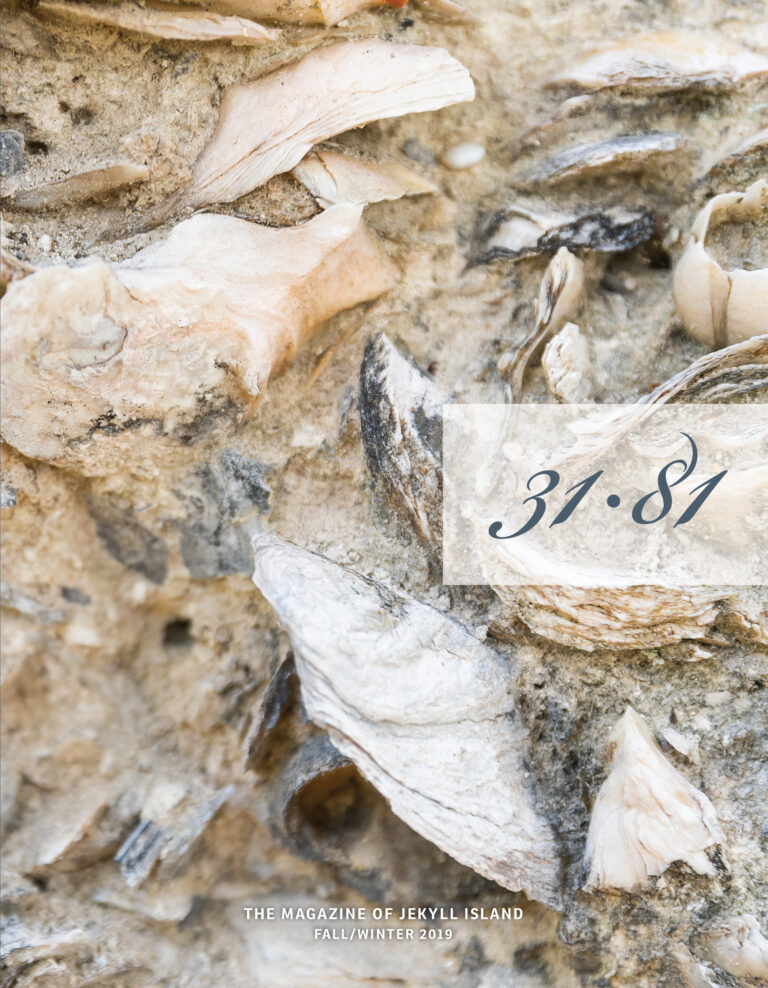By Tess Malone
Uncovering the island’s past in what’s left behind
What’s disposed of, lost, or left behind can explain a lot about a society. Archaeologists have discovered as much in Jekyll Island’s middens, heaps of long-ago tossed-out kitchen scraps, seashells and other buried treasures scattered around the island.
Each midden is a tapestry revealing how the Guale and Mocama tribes ate, worshipped, lived, and eventually moved on after their arrival on Jekyll around 2500 B.C. An example: Oysters and mollusks always have been a culinary staple of islanders. Now, their shells have become part of the walls of the dozens of middens found on the island. Bird, fish, and deer bones found in the middens’ depths help to explain the island inhabitants’ well-rounded diet. Maybe the most insightful find in middens: Traces of pollen, which help determine what was blooming in each bygone season.
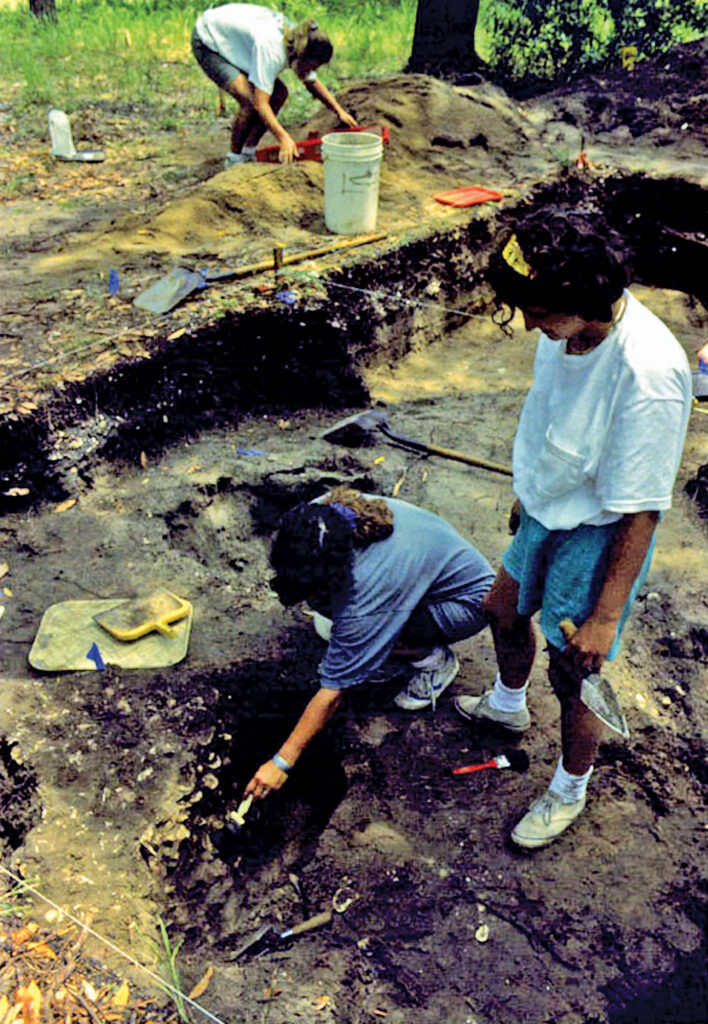
The middens also show evidence of cooking, proof that tribes were staying long enough to call Jekyll home. (Some of the oldest North American pottery is found on Jekyll. Sherds from broken cooking pots are found in middens.) Charcoal in middens—made of everything from nutshells to corn cobs—enables us to use radiocarbon dating to determine when tribes began to settle on the island. Each layer in a midden gives us insight into different time periods.
All of that rich history isn’t readily apparent, though. Uncovering the past takes skill and a good bit of patience. “Care must be exercised in excavating middens and recording the findings,” says Bruce Piatek, the Director of Historical Resources for the Jekyll Island Authority. “To unravel the story of who, what, where, and when, we need all the clues that are part of the midden: its location, artifacts, pollen samples, and other features.”
Like many Jekyll visitors today, Native Americans first came to the island for its favorable climate. They stayed for its easily traversed waterways and bountiful access to food. Eventually the Guale and Mocama settled here, as evidenced by the burial mound in front of Indian Mound Cottage.
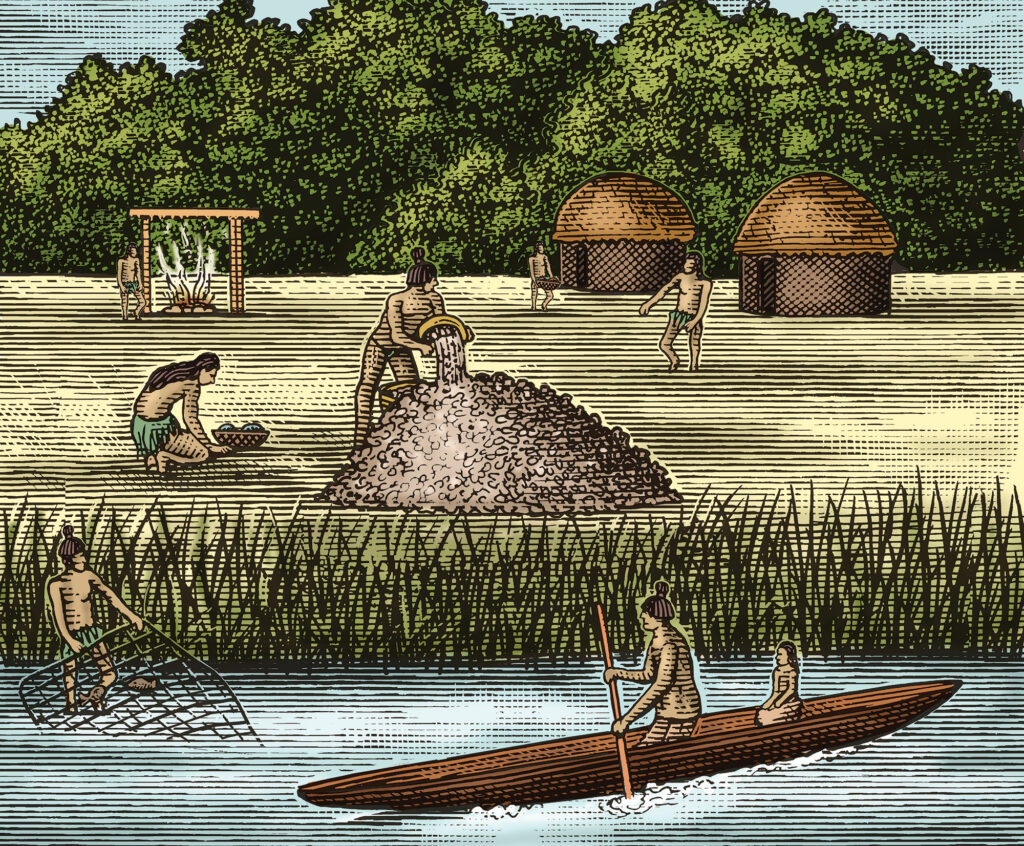
That mound is part of a larger midden that encompasses the Historic District and shows the robust life that Native Americans once led here. The burial ground was discovered when the Rockefeller family, looking to improve the cottage’s view of the river, had part of the mound dug up.
“What we find in middens is the unwritten history of Jekyll Island,” Piatek says, “and parts of the story have yet to be told.”
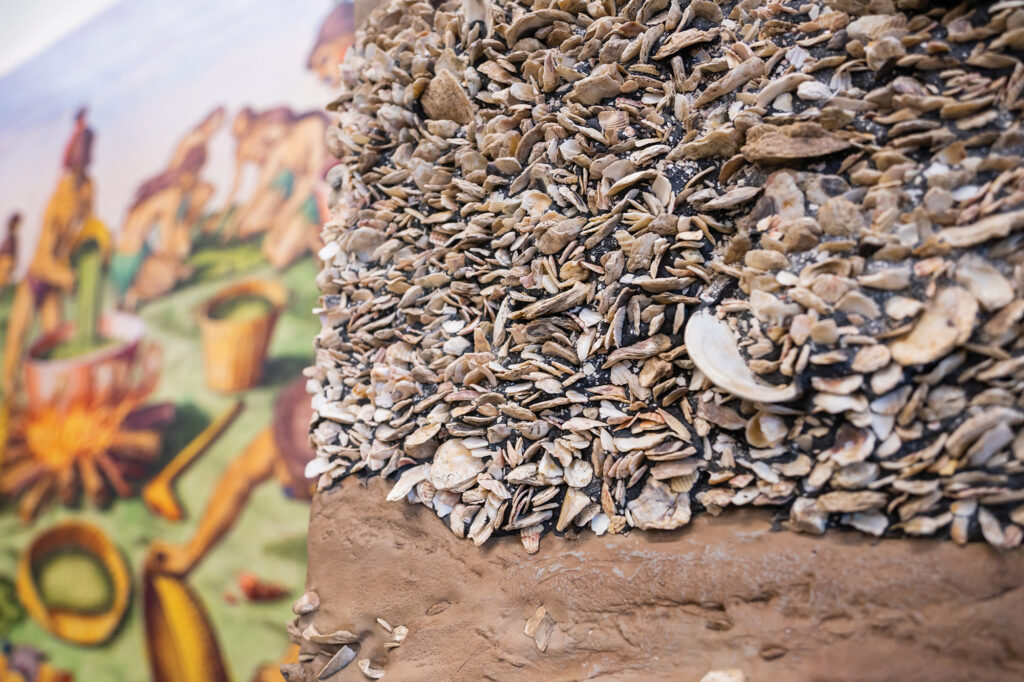
Hidden in the Midden
Explore a midden through a hands-on exhibit at Mosaic, Jekyll Island Museum, and find what archaeologists have uncovered about Native American life on the Island.
